Media | Articles
American Kei: ’90s Cute Utes That Carved a Path
The 1990s were a wild era for sport-utility vehicles. Models like the mid-size Ford Explorer blew open the segment, showing families a fresh alternative to the traditional station wagons and dowdy-but-functional minivans that had taken over as the capacious conveyances of choice. Compact SUVs like the Jeep Cherokee and Chevrolet S-10 Blazer, which had arrived in the mid-1980s, remained popular well into the following decade. Automakers thus found themselves freed from the full-size shackles that had until then dominated the SUV scene, and they were willing to take a chance or two on more small SUVs—even trucklets that trod a much more modest footprint.
Among these market experiments, perhaps the boldest was a gambit from Japanese automakers to sell smaller, “kei”-derived SUVs in America. If the term is unfamiliar, kei cars were born out of rigorous regulations and insurance practices in the Japanese domestic market. The result was a subset of tiny, city-focused autos that ranged from sporty to semi-rugged: box-like vans, gull-winged coupes, and two-door ‘utes were all readily available in Japan at reasonable prices. Despite their shoebox proportions and capped displacements (no more than 660cc for most of the 1990s), kei vehicles proved massively popular and served as the economic bedrock that financed the overseas overtures of numerous pan-Pacific brands.
Slightly puffed-up kei trucks, despite big ambitions, failed to take hold in the Western world. It would take another 20 years or so for Americans to embrace the small, gently lifted trucklets that dominate today’s entry-level market. Despite their legacy of missteps, the original crop of kei-flavored SUVs seems ripe for re-evaluation, especially as auction blocks and online sales platforms are filling up with more JDM metal each year that becomes eligible for import under the 25-year rule.
Suzuki Gets a Head Start

Despite the cute-ute revolution not fully blossoming until the ’90s, the United States had already been the subject of a kei-truck experiment that began midway through the previous decade. The Suzuki Samurai, which arrived as a 1986 model, presented off-road fans with the smallest possible steed for sampling the great outdoors. The Samurai was a rebadged version of the brand’s popular Jimny, a strong-selling kei competitor in Japan.
Measuring 4.5 feet shorter and nearly 2 feet narrower than a contemporary Ford Bronco, and offering a sub-$8000 price tag, the Samurai found a healthy audience with hardcore off-road fans who valued light weight, small footprint, and switchable 4WD transfer case that allowed it to handle challenging trails. The North American engine at launch was a carbureted 1.3-liter, 63-hp four-cylinder, rather than the 543-cc and 41-hp mill in the kei-class version. Later, in 1991, Suzuki added fuel injection for North America that ticked output to 66 hp.
Marketplace
Buy and sell classics with confidence
Sales neared the 50,000 mark in the model’s first year. The SUV’s raucous reception was soon muted, however, when Consumer Reports flagged the Suzuki’s propensity for rollover accidents resulting from its short wheelbase and narrow track. A libel lawsuit ensued, and while the Samurai remained in showrooms until 1995, the damage to the vehicle’s reputation was done.
Suzuki had significantly more success with its second foray into small SUVs, launched in 1988. The Sidekick was a step up from the Samurai in terms of size, grafting an additional two feet onto its overall length and boosting its track by a foot or so. A new 1.6-liter four-pot engine offered 80 hp. Not only did these moves improve passenger room, on-road stability, and drivability versus the Samurai, but they also attracted a corporate partner with deep pockets: General Motors. GM owned a minority stake in Suzuki at the time and signed on to build and sell a version of the Sidekick called the Tracker, branded with its nascent Geo marque.
Until 1995, the Sidekick/Tracker was sold alongside the Samurai, whose sales dwindled until it went out of production in 1995. The twins were a boon for Suzuki and gave GM access to an entirely new group of customers when the kei trucks were introduced for the 1989 model year. The timing was perfect, as the contemporary fervor for SUVs dovetailed nicely with the Tracker/Sidekick’s affordable price, respectable off-road chops, and livable driving dynamics. It also didn’t hurt that the little SUV was the perfect size to tow behind an RV, serving as a convertible, fun-in-the-sun dinghy with which adventurers could explore beyond campgrounds.
Big Splash, Small Pond
The Sidekick and Tracker initially had zero competition in the United States, as no other subcompact SUVs had yet appeared as of the early 1990s. It wasn’t long before one of the world’s biggest automakers emerged to test similar waters.
Toyota’s cute-ute approach for the first-ever RAV4 took an entirely different tack. Rather than tap into its vast wellspring of off-road acumen, the Japanese automaker instead pursued packaging as the vehicle’s primary strength. The goal was a street-oriented trucklet that was comfortable, spacious, and thrifty while mimicking the style (and open-roofed fun) of the tiny two-door SUVs that came before it.
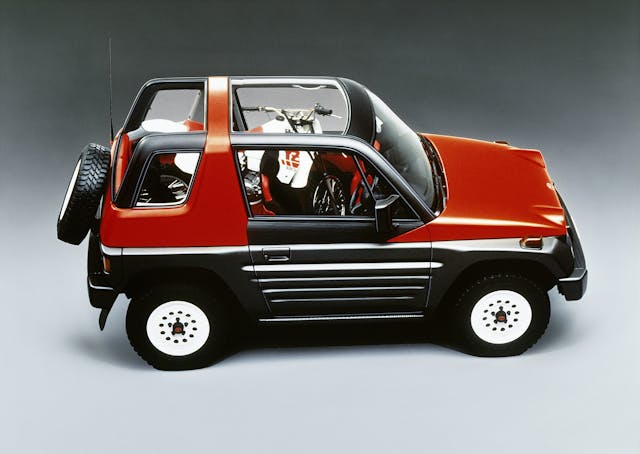
Toyota took its time to get this formula right. The RAV Four concept was first displayed at the 1989 Tokyo Motor Show, but it wasn’t until four years later that a less Jeep-like, more production-ready version appeared. The vehicle actually went on sale in Japan in 1994, and this “Recreational Active Vehicle with 4WD” arrived on American shores in 1996.
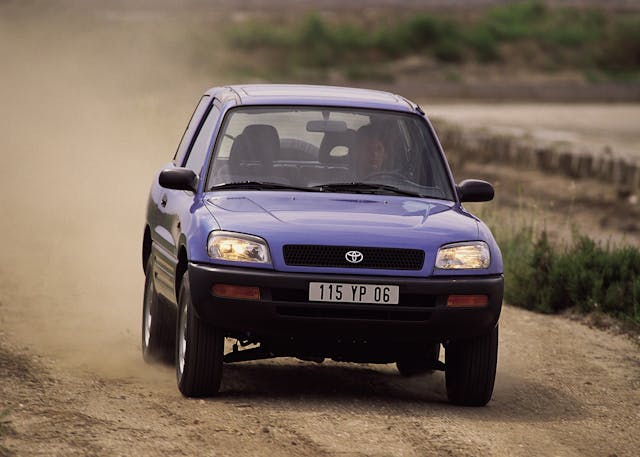
Although a four-door model was available, the two-door (with optional soft top in 1998 and 1999) RAV4 epitomized the kei-like, fun-loving attitude that fed Sidekick and Tracker popularity. Though the RAV4 was dimensionally identical to its tiny-truck rivals, that’s where the similarities ended; instead of body-on-frame construction, Toyota’s urban mini featured a smooth-riding unibody design matched with frugal front-wheel drive. (An available slip-and-grip style all-wheel drive system was also available on the order sheet.)
End of the Era
Although it might have initially felt the beginning of a huge movement, a giant like Toyota jumping into the cute-ute tub ended up sloshing all the water out instead. By the end of the decade, it was clear that most buyers preferred the RAV4’s approach and favored practicality over capability in such thimble-sized sport-utilities. And while off-road specialists like the Jeep Wrangler could thrive in two-door form, four-door sales quickly came to dwarf everything else on the road.
Unfortunately for Suzuki, its third, most ill-fated kei truck did not match the prevailing trends. A would-be replacement for the Samurai, the 1996 Suzuki X-90 occupied nearly the same amount of space but prioritized style over substance. Though it packed a legitimate low-range four-wheel drive system and a tough enough frame, the X-90 was doomed by its unusual two-seat body style that swapped in a sealed trunk for a long-roofed hatch, effectively cleaving its utility and dooming its appeal to only the most daring of motorized toy shoppers. It was gone from showrooms after only three model years.
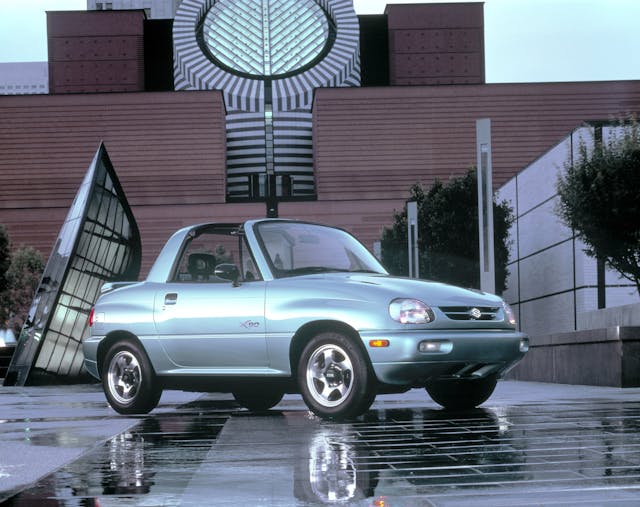
Sales of the two-door RAV4 never took off, either, compared with the volume success that was its four-door sibling, and Toyota wiped it from the roster amid the RAV4’s 2001 redesign. That left only the Tracker (eventually wearing a Chevy badge) and the renamed Sidekick (now the Vitara) to continue the short-wheelbase crusade, although each did gain a long-wheelbase/four-door variant to meet obvious demand. Both were gone after 2005.
GM’s S10 Chevy Blazer and S15 GMC Jimmy, larger two-door stalwarts, also faded away after 2005. That left the Jeep Wrangler as the last two-door SUV standing in North America, reigning as the truncated utility king with very few challengers real until the arrival of the recently revived Bronco and Defender. Even the Wrangler, however, adopted a four-door model (dubbed Unlimited) with the 2007-model-year JK generation. Today, the overwhelming majority of Wranglers, Broncos, and Defenders sold come with four doors.
Opportunity Knocks (At Knee-Level)
Thanks to the roving 25-year import window that JDM vehicles from the kei car heyday finally legal, collectors are taking major interest in tiny tots like the Mitsubishi Pajero Mini and the original Suzuki Jimny, alongside adjacent utility-friendly rides such as the Nissan S-cargo and the Subaru Sambar vans. They join a chorus of imported roadsters (Honda Beat, Suzuki Cappucino), hot hatches (Suzuki Alto Works) and mini-exotics (Autozam AZ-1) serving Rad-era enthusiasts with a taste for once-forbidden fruit. Yearly U.S. imports for the Pajero Mini and Jimny, for instance, have more than doubled since 2020.
Will that attention soon toward inward, back at the Samurai, Tracker, Sidekick, and RAV4? Values of models like the Samurai have remained attainable even as other classic SUVs see their price tags climb skyward, and the market for clean Trackers, Sidekicks, and RAV4s is in a similar state. Prized by their devoted fan bases but for the most part ignored by mainstream collectors, these American-market, almost-kei trucklets offer the chance to get into a cute-ute without the added step of importation.
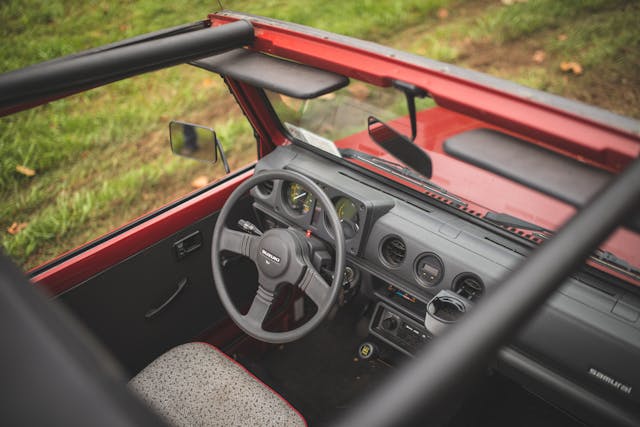
***
Check out the Hagerty Media homepage so you don’t miss a single story, or better yet, bookmark it. To get our best stories delivered right to your inbox, subscribe to our newsletters.



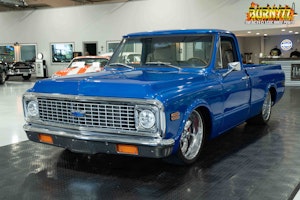
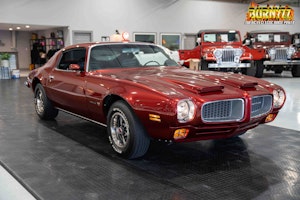


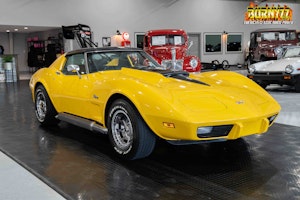

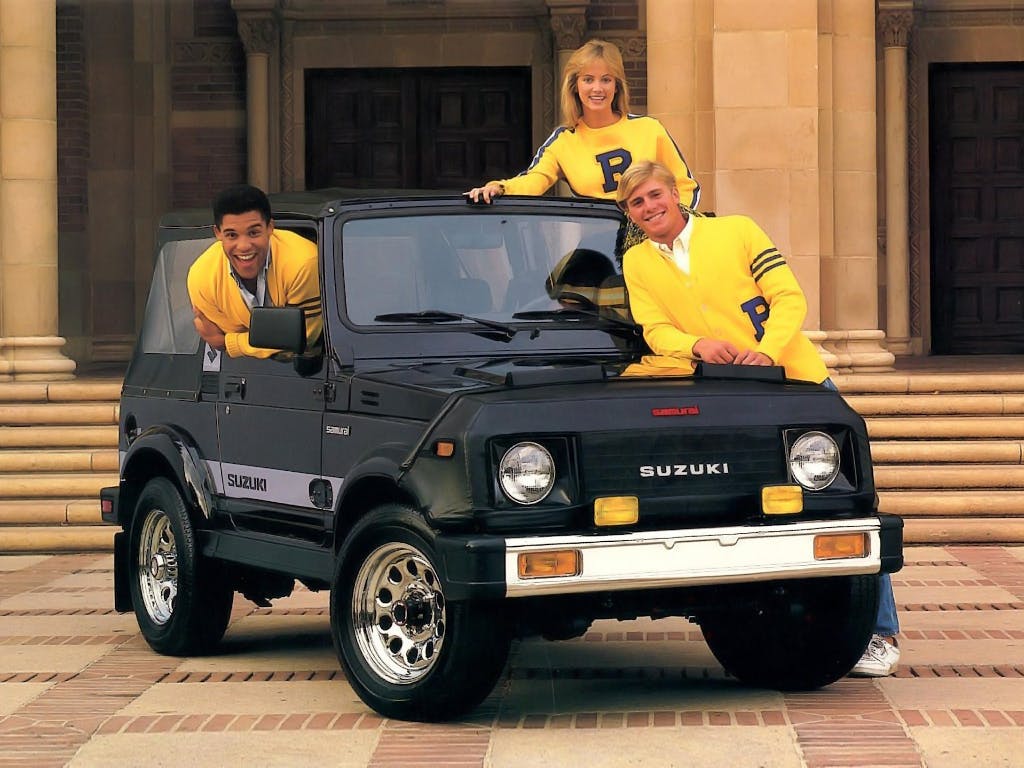
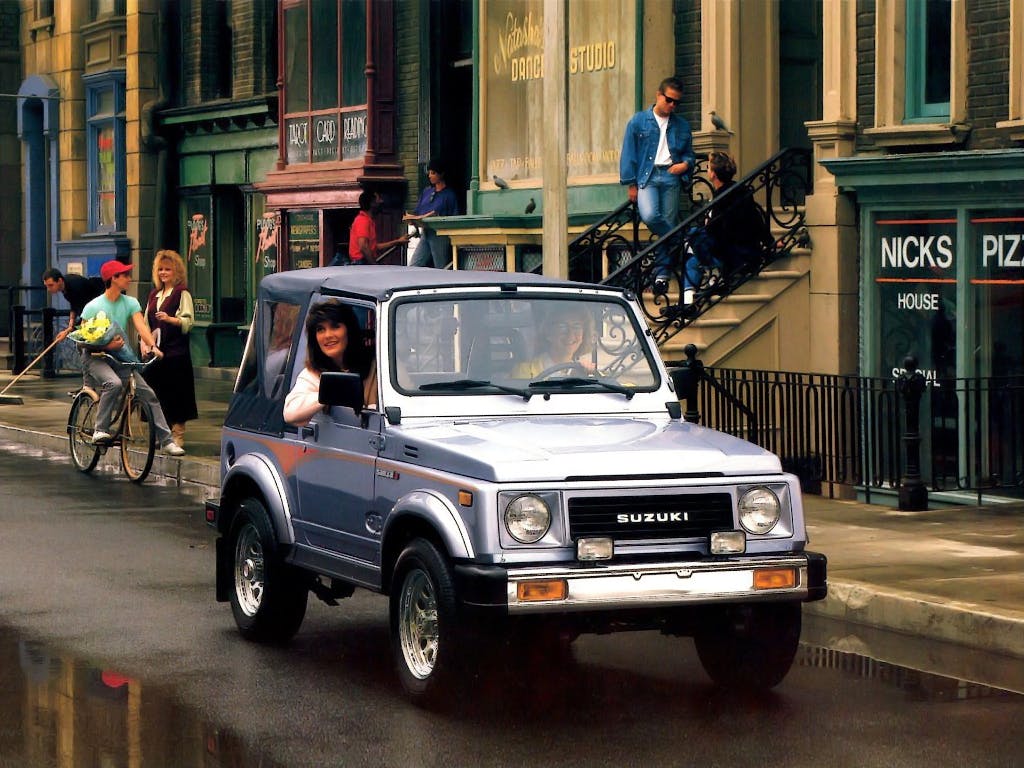
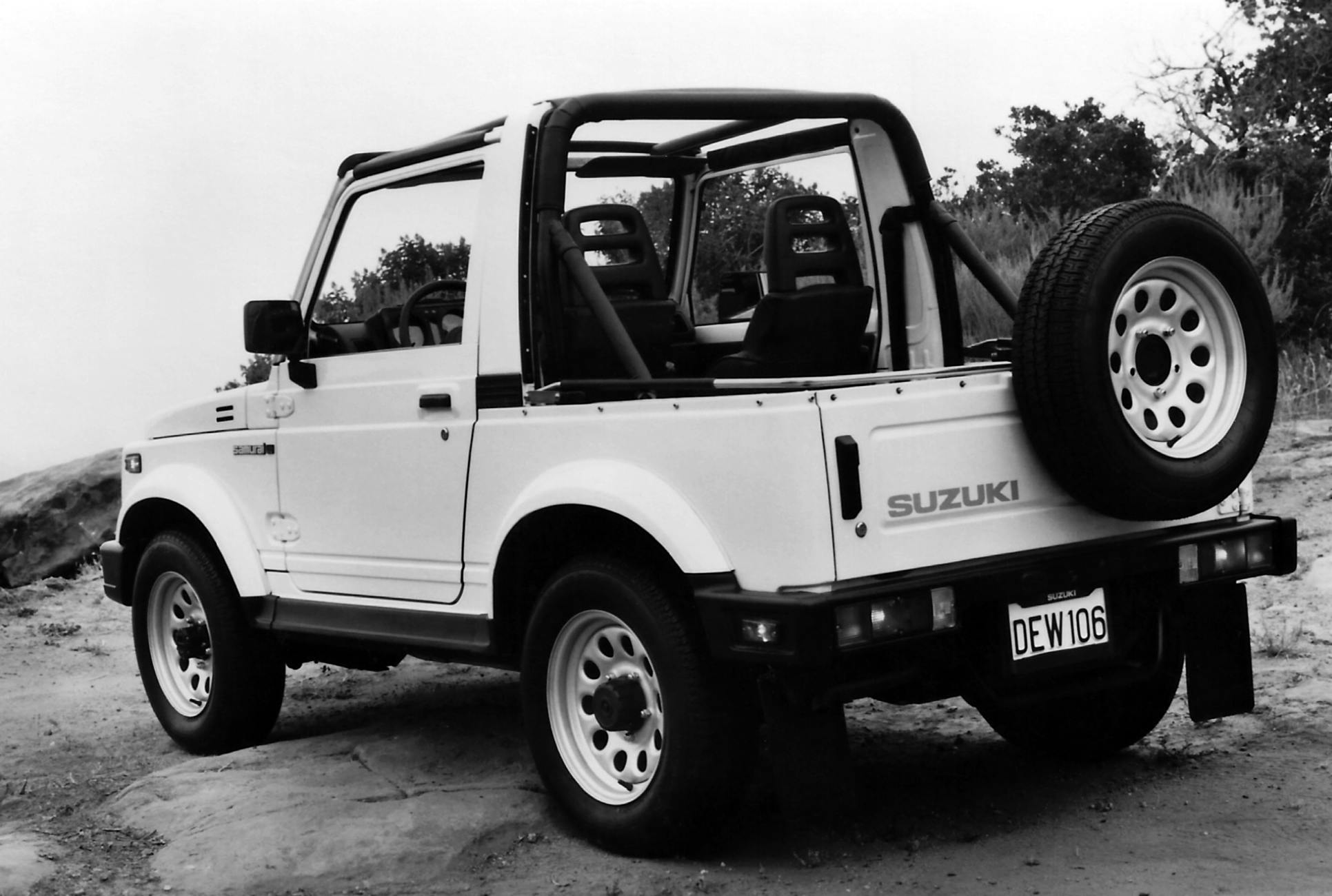
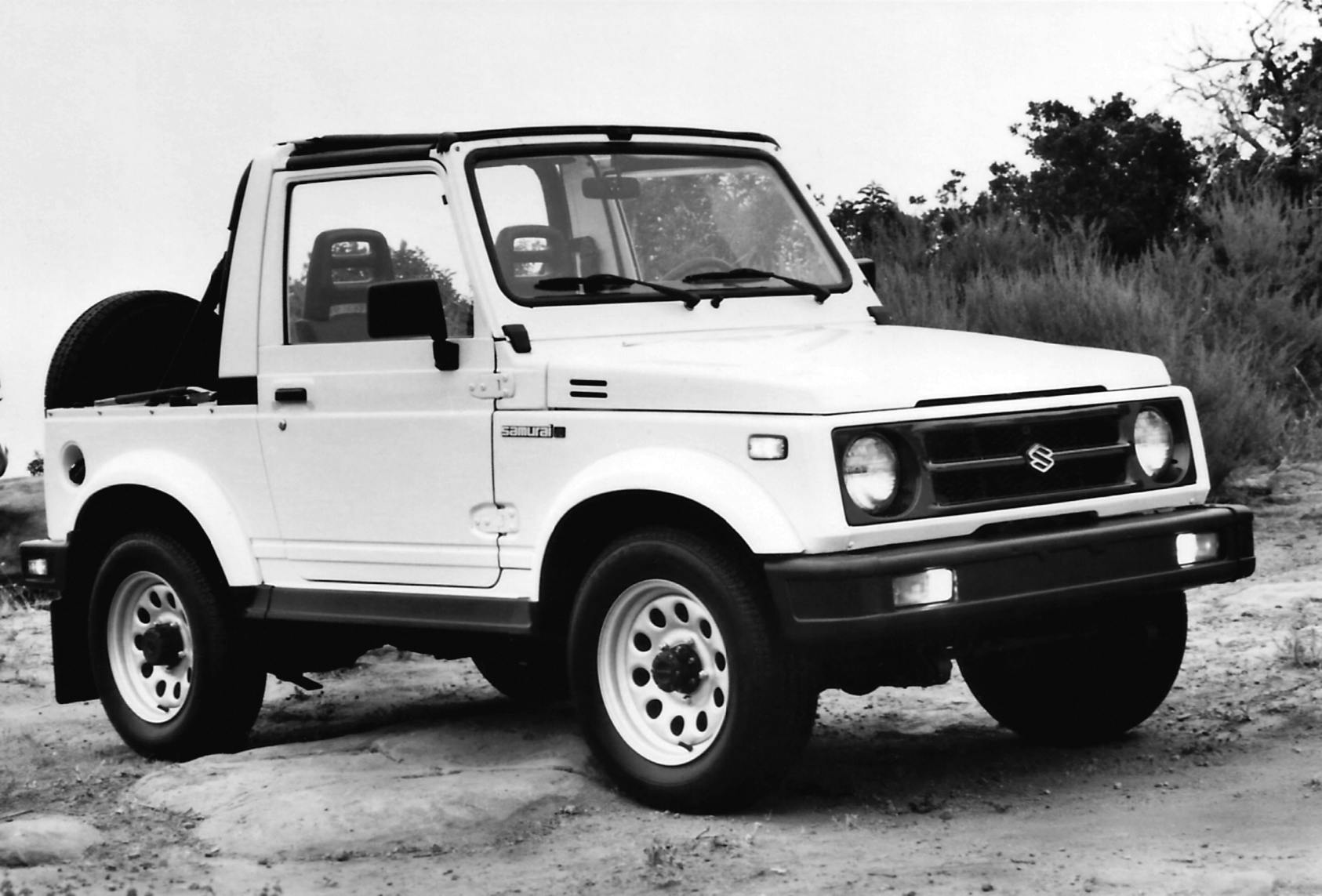
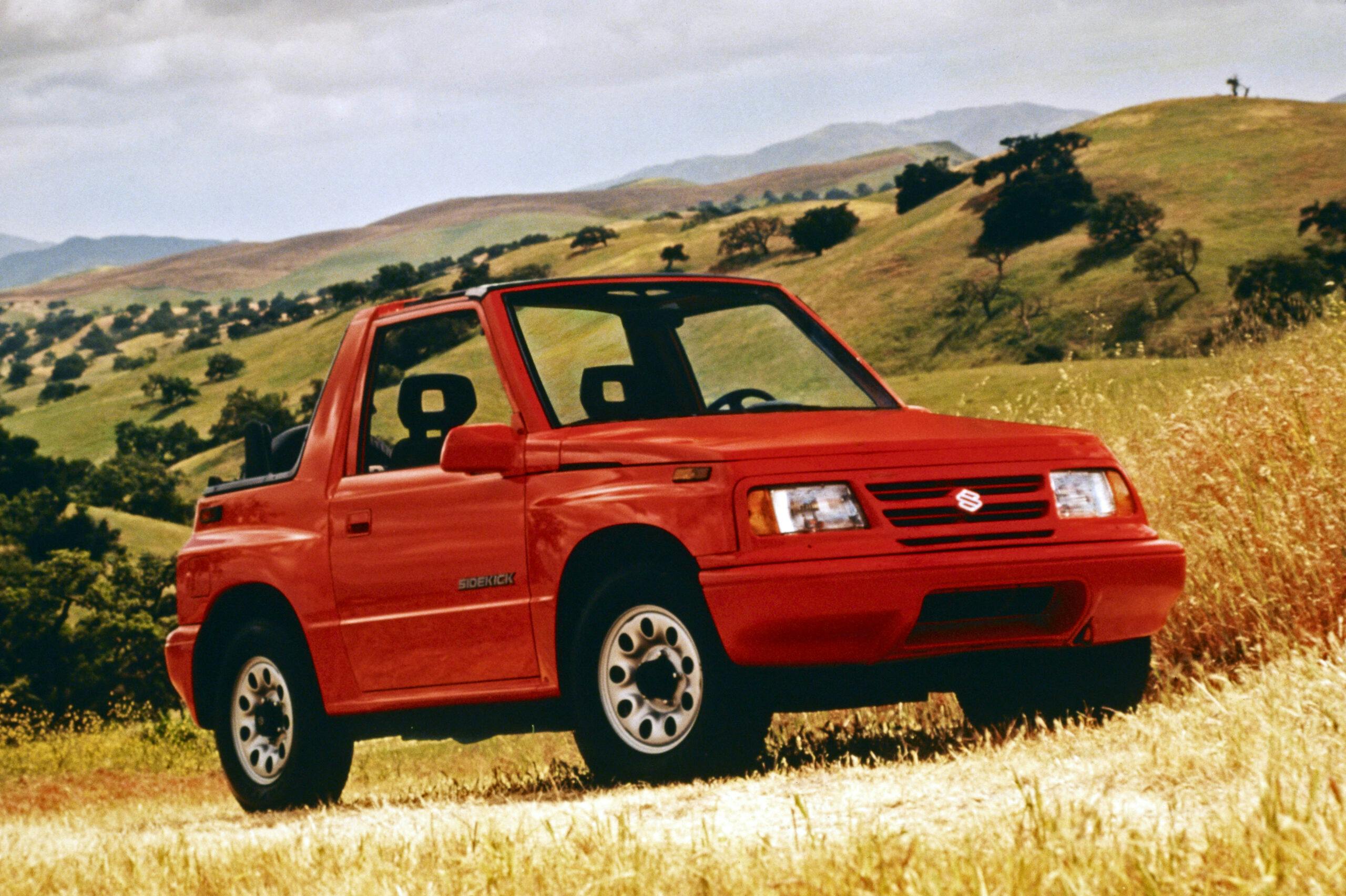
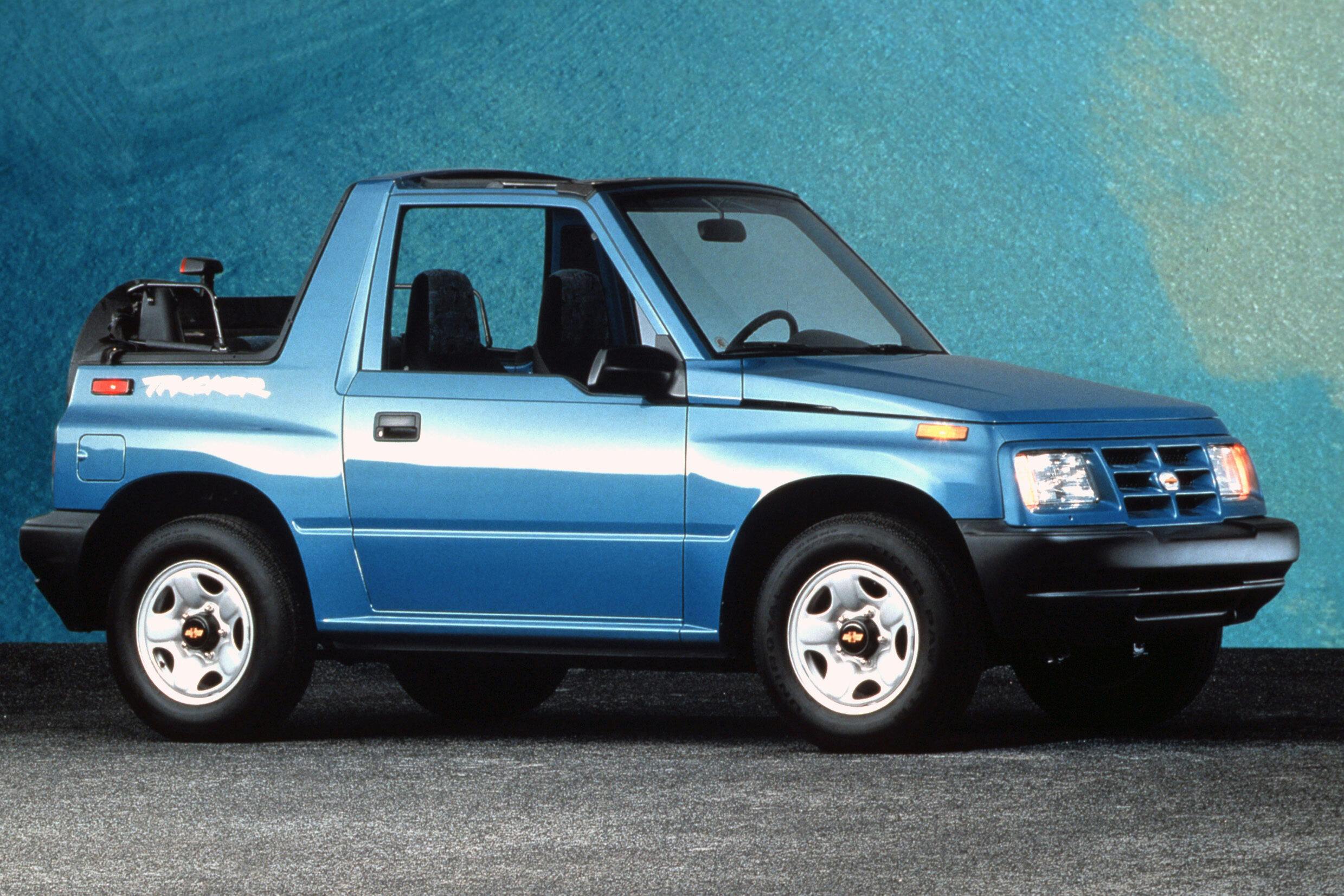





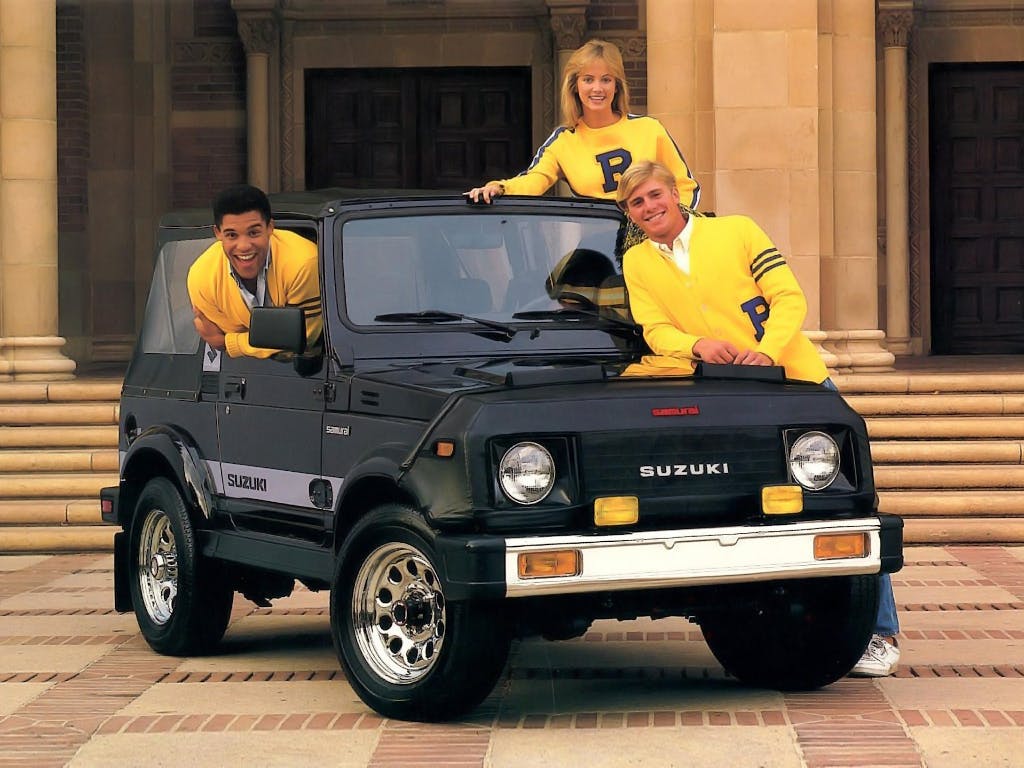

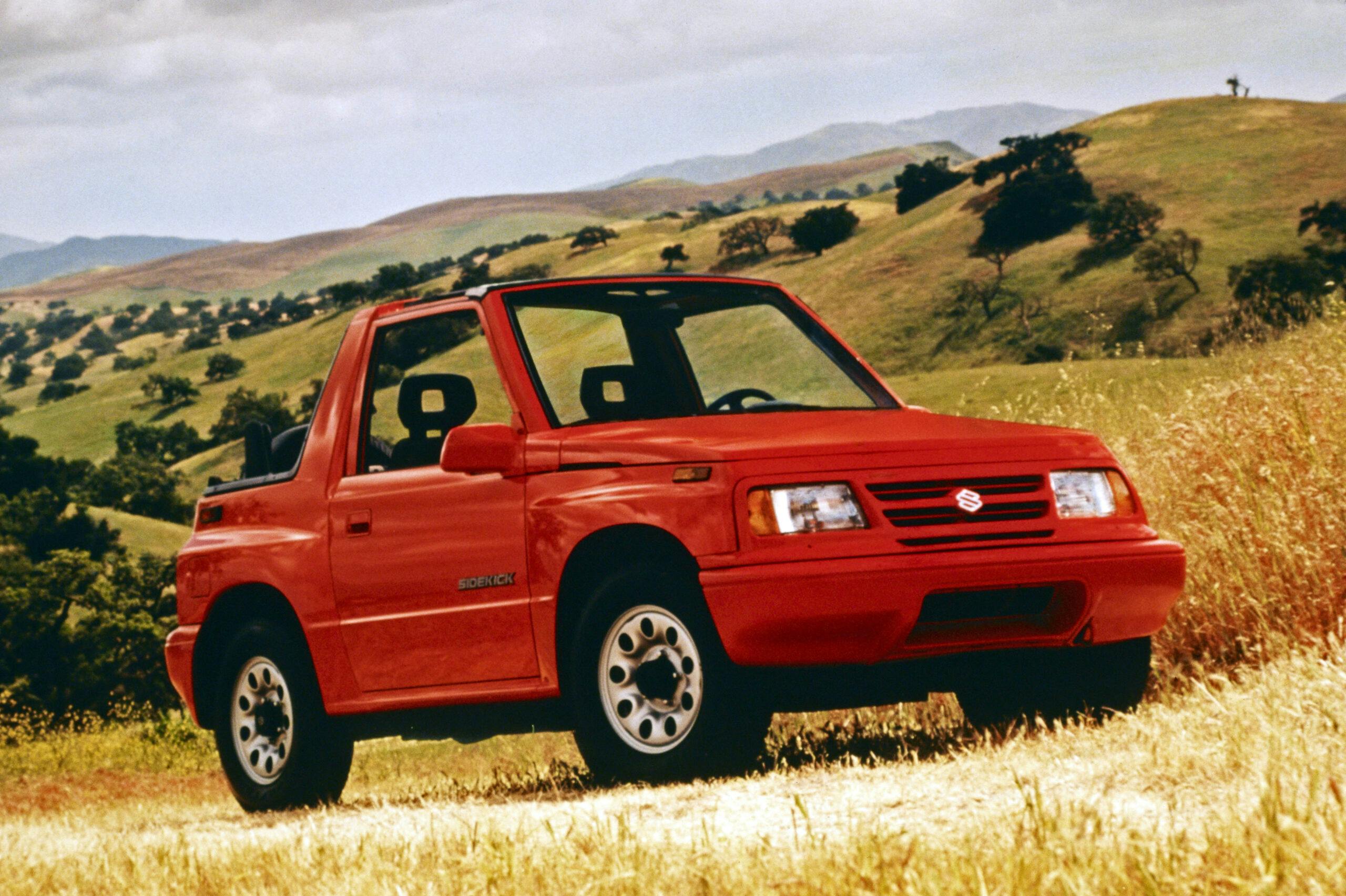






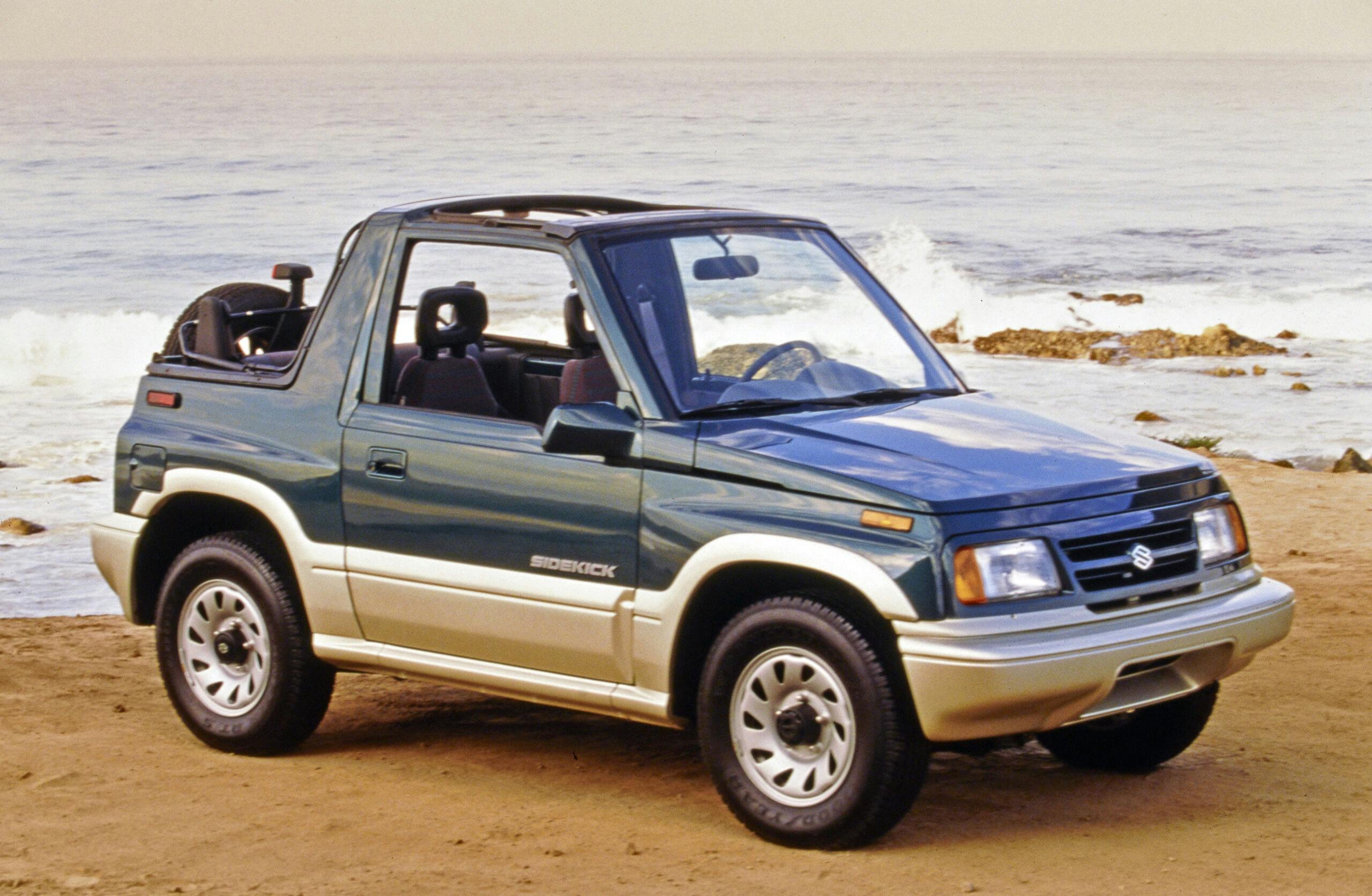
I bought a Samurai new in 88 and still have it! Great little 4×4 buggy, very few bugs- carb, four wheel shifter bushing & lack of starter relay. Just found a 93 Jimny from Okinawa ex US Marine set up for off road with a 3 cylinder 660 cc turbo that purrs but have drive it like a weedeater! Lots of fun to drive
Jeep also took a run at this market. The project was called the “JJ”. This was an offsite joint venture with the then partner Renault. My first job at Jeep was program management on this program. It was pretty much fully developed, but the partnership with the French was falling apart at the time. Also, the bosses decided we had missed the Goe/Sidekick market window. The program was mothballed in early 1990. We did build 7 fully functional prototypes with some early body innovations. “SP 7” actually ran the Rubicon trail in 1989 – All Jeeps had to run that trail back in the day. We kept a couple of the prototypes into the 2000s for reference. That is all . . . ; < )
The JJ is such a cool, and sadly little-known project. I wish it would have made it to market. Thank you for posting about your time working on it.
I daily-drive a ’95 Geo Tracker (2-door convertible, Manual, 4WD, 16-valve), and love it! It was cheap to buy, is seriously good on gas, is daily-livable, and is just a very fun, interesting, choice! Plus, the selection between RWD and 4WD is perfect for Canadian winters here–RWD for some fun oversteer in the snow if you want it; 4WD for serious traction needs.
Liked this article, Benjamin. A bit of confusion though …. you said “Consumer Reports flagged the Suzuki’s propensity for rollover accidents resulting from its short wheelbase”. I thought rollover propensity resulted from a narrow track … more specifically that narrow track’s relationship to the vehicle CG. Someone is wrong here … is it Consumer Reports, you or me ?
I am not a physicist or engineer, but I believe that I recall reading that the vehicle’s length can affect the likelihood of rollover. That is definitely true of a three-wheel vehicle, and thinking about it, seems likely true for a 4-wheeled one, also. Track, length, and CG are seemingly the three main variables. Of course, traction (due to tires or road surface) can have an effect, as can modern rollover-mitigation electronics.
Definitely a mix of both. You’ll see some reporting at the time that the narrow wheelbase was the biggest danger, but the length is also an issue for vehicles that ride taller like the Suzuki. Most of the press coverage at the time focused on the narrow track, however. It was a similar story for the Bronco II. I should likely make a note in the piece to include that info here – I appreciate it.
Story has been updated, thanks for the conversation.
Suzuki was a household name growing up in Puerto Rico. YES! The Samurai and the Forza/ Swift were dime a dozen and would last FOREVER! If you wanna see something scary but awesome — look in Google for Samurai /Rotary swap. If you think narrow wheel base etc. as dangerous, imagine it slammed to the ground with 450-500 /10,000 RPM turbo rotary doing 10 seconds 1/4 mile times!!
I’d like to have a 1st gen Rav4, 4×4, 2 door with manual transmission, in green or whatever shade of blue.
I had a friend with a Suzuki Samurai which was lovingly called the Suzuki Sideways. It was a fun vehicle. I learned stick on it. My wife when I first met her had a Chevy Tracker. It was fine but lacked ABS and had horrible OEM Goodyears that sucked in any rain or snow. We dumped it for a Subaru Impreza a year after we got married.
Can’t say it enough. A backbreaker for anyone in the back seats. Cute? Yes, but I look at a Samurai and immediately feel back pain.
Oh, this brings me back. I’ve said it before, of all the cars I’ve owned, the Samurai is the one I wish I still had. Yes, it was slow. Yes, it bounced you around, especially in the back seat (and especially if you were very pregnant (still hearing about that one)), but it just put a smile on your face when you drove it.
I recall a Suzuki from the early 1970’s, with a two-stroke engine; I believe a major car mag reviewed one, and said it was legal for importation new. I even saw one the road once, in Illinois. Was that a “Jimny”? Would that have been a Kei-car derivative?
The Jimney’s first model year was 1970, and it did have a two-stroke. I’m not sure whether it was officially imported, but grey market was easier to deal with in that era in terms of getting vehicles into the country.
That was the LJ series – sometimes it is called a “Jimny” but it was actually the “LJ” . There was a LJ30, a Lj50 and a Lj80 – The 30 and 50 had two strokes 300 and 500 cc engines and the Lj80 had a 4 stroke 800cc engine. By comparison to the LJs, the Samurais (the SJ series) are luxury rocket ships 🙂 I know, because I have an LJ80 as a daily driver. It is smaller than small and at 68kmh the engine revs at 4000 rpm.
You completely forgot to add the Daihatsu Rocky to your article.
Daihatsu has a long story with small 4×4’s and was a bigger competitor to Suzuki and Toyota in the Asian market.
Unfortunately Daihatsu decided to come to USA in the wrong moment and the import restrictions + bad PR + wrong price strategy didn’t allowed them to stay around for longer. Between 89 and 92 they sold a little more than 7500 Rocky in USA.
Nowadays there are a little more than 1800 survivors and a big fan club.
The Rocky it’s one of the best representation of the rugged 4×4 from the 90’s with a super square body, larger fenders, impeccable interior and very capable on off-road.